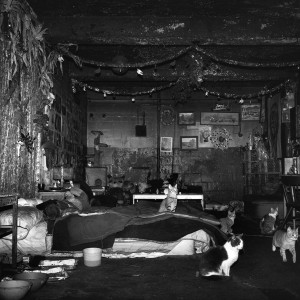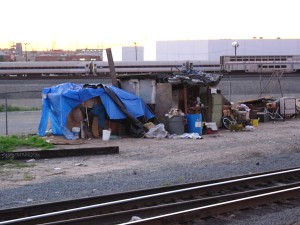In Margaret Morton’s The Tunnel, life of the people who live in the tunnel is described by many of the inhabitants to give an idea of what it is like to live there and what living there has done for them. A man named Bernard explained the life that he goes through in a way that he does not seem homeless at all. He has a home even if the common person would not live there. He lives there and lives a life that does not perceive his homelessness as a problem. Rather than a problem, Bernard is simply trying to find himself, and being isolated in the tunnel is helping him do so. Bob’s story is another example of the tunnel being an opportunity to find oneself. Bob was a traveler and very free spirited, he gave it all up and moved to the tunnel. While living in the tunnel, he was able to find out who he really was. A guy named Manny was able to escape his dysfunctional family by going to the tunnel. The tunnel is used by many to escape from hard home life situations. Ria’s story points out how it is more difficult for women than man because they can be easily taken advantage of. All of these people who live in the tunnel, one way or another, have reasons to be there.
The tunnel is an opportunity for many to start over or retreat from the unwanted lifestyle that they live. The majority of the people in Margaret Morton’s The Tunnel, mention the freedom that they experienced by not having to pay rent or any other bills they had before living in the tunnel. This freedom takes away stress that the average person carries. The tunnel can easily be named as an escape route for many people who have problems in their life. Countless people who live in the tunnel have had a difficult time growing up which has created their desire to get away from the life that they once had above ground. Grief from losses and traumatizing events, such as abuse, has driven them away from their old lives. A lot of people who live in the tunnels left their families behind to start over underground. The people who live in the tunnel make their own space into a home using anything that they can find that is interesting to them. Inhabitants of the tunnel work together sometimes to help provide for others who also live in the tunnel. Normal life is possible in the tunnel, there are even married couples like Cathy and Joe who live in their home underground together. Many of the people who live in the tunnel find ways to make money. For instance, the people collect cans and look out for money laying around carnivals or other tourist spots. A lot of people lived on the streets before they moved to the tunnel, so the tunnel became a home for them because it is a big change from no shelter on the streets of a city. Also, a bunch of people could support themselves before the tunnel, but they spent their money on alcohol and other substances that led them to the underground lifestyle. Not all of the people who live in the tunnel are drug addicted or alcoholics though, there are some who live there just because they have no other place to go.
The lives of the inhabitants of the tunnel might not be as fancy as ours, but they manage to make it day by day with what they have. They are able to survive and continue living even if it is not in the best conditions. Margaret Morton uses these stories and photographs to show the importance of this space to this specific group of people.




